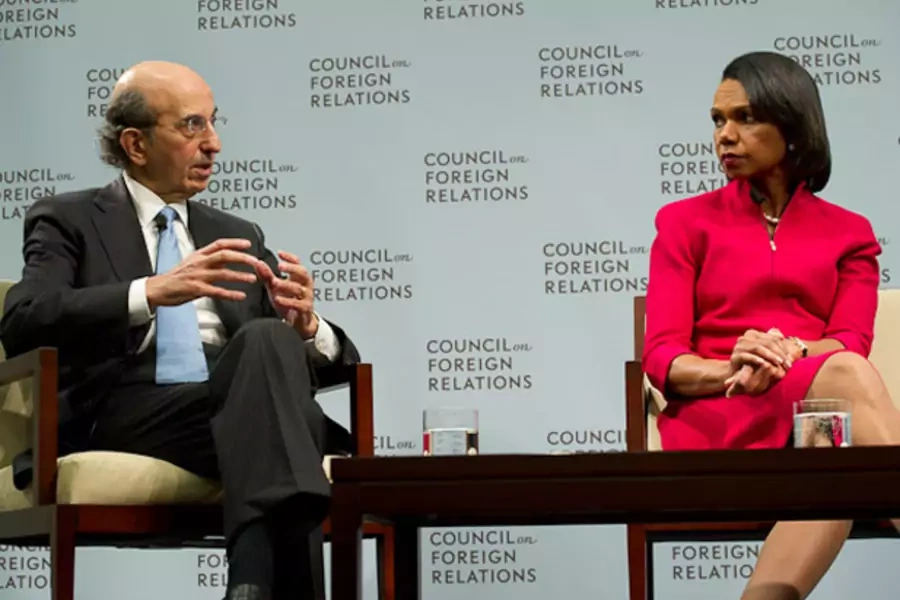CFR’s Education Task Force: A Stark Warning and the Challenge Ahead

More on:
Education, perhaps more than any other issue, captures the worries over the precarious U.S. competitive position in the world. It is no exaggeration to say that the United States became the world’s most successful economy because, by the middle of the 20th century, it was educating more of its young people to a higher level than any other country in the world. That investment in human capital helped propel the greatest economic success story of the last century.
The waning of that advantage over the past several decades has quite rightly been and continues to be a subject of tremendous hand-wringing. The Council of Foreign Relations new Independent Task Force on U.S. Education Reform and National Security, co-chaired by former Secretary of State Condoleezza Rice and former New York City Schools Chancellor Joel Klein, takes that concern to a new level. (Full disclosure: I was an observer to the Task Force, which meant that I participated in some of the deliberations but was not asked to endorse the final report).
It makes a compelling case that the failure of the United States to maintain its leadership in education ultimately threatens not just U.S. prosperity but its national security. It concludes that too many of our K-12 schools are simply failing to give students the basic preparation they need to engage in a modern, technologically sophisticated economy.
There are a number of striking illustrations in the report, but perhaps the most telling are three charts that look at the percentage of Americans attaining a college degree, broken down by age group. Among those aged 55 to 64, some 40 percent have a college degree, which is tied for the highest in the world along with Canada. Among those aged 45 to 54, the college completion level is also 40 percent, in 3rd behind Canada and Japan. Among Americans aged 25 to 34, the college completion rate remains just above 40 percent. But that now puts the United States in 10th place, behind such countries as Korea, New Zealand and Australia.
The story is not so much one of the United States falling back, but of standing still while others move ahead. The education advantage has clearly been lost, as is demonstrated by the more familiar statistics on K-12 education, which show American students in the middle or lower ranges among developed countries in reading, math and science achievement.
What to do? Here the report has already triggered a significant debate largely because of its embrace of the idea of greater school choice, a position that was lauded by the Wall Street Journal. But it also caused a number of spirited and thoughtful dissents from some of the Task Force members. I hope that the choice issue does not detract from the report’s other important recommendations, including the expansion of core curriculum standards to include science, technology, and foreign languages as well as math and reading. Both proponents and opponents of greater school choice have some compelling arguments. The opponents can rightly point out that the best performing school systems in the world are nationally-directed, public systems like Finland, and that the U.S. experiment with charter schools to date has shown mixed results. The proponents can rightly argue that the United States already has a school choice system for some--the wealthy who can afford to live in better public school districts or send their children to private schools. Why should poorer families not have the same choices? Both sides agree that the United States must be a society that rewards talent and effort over pedigree, something that is impossible without quality schooling being available to all.
But in some ways the debate over school choice misses the real issue. There is plenty of evidence, and rather solid consensus, that the single best way to improve learning is to recruit and retain high-quality teachers. And the key issues there have little to do with school choice, but instead with teacher training programs, with hiring, pay, advancement, and tenure rules within the schools, and with inculcating a greater respect for teaching as a profession in American society more broadly. The report makes a persuasive case that the best performing countries are the ones focused on teacher quality, but that observation gets somewhat lost in recommendations that emphasize the combination of national standards and school choice as keys to reform.
The Task Force offers a powerful diagnosis of the problems in our educational system, and a stark warning of the consequences of failing to address them. But finding greater consensus on how to move forward clearly remains an enormous challenge.
More on:
 Online Store
Online Store